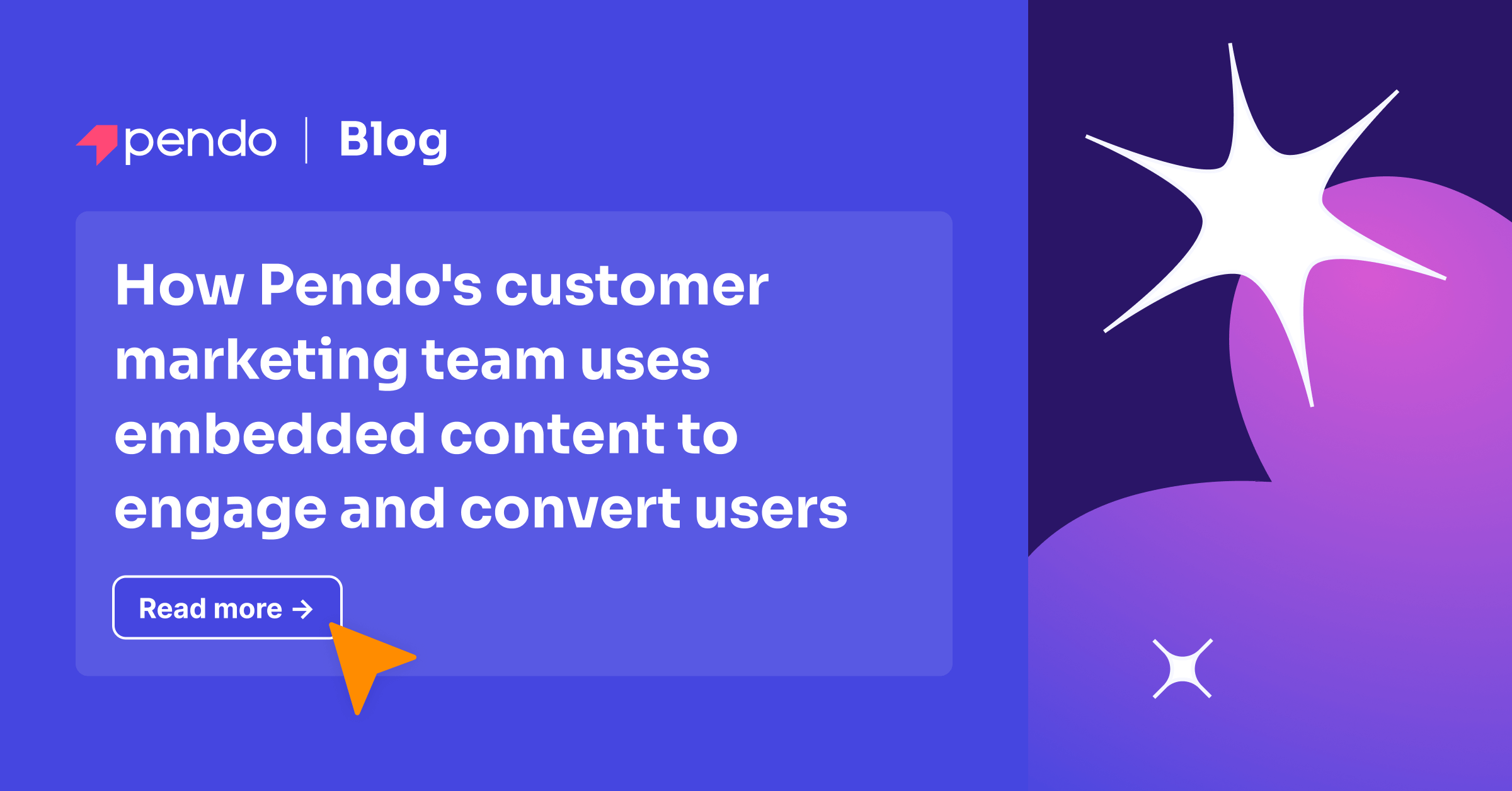An evolution of in-app communications is underway, and for more than just product teams.
Personalization is one of the buzziest words in tech today (alongside AI). When you’re small, getting to know your users and tailoring their product experiences is feasible. But as you grow, it becomes harder to maintain that same level of closeness.
Pendo’s customer marketing team needed a way to scale one-to-one communications without sending more emails or posting more on social media. We needed to reach our customers where they were engaging with us. And with embedded content, we did just that.
Turning our login screen into a communications channel
Pendo’s greeting experience was always the same: A gray screen, a place to enter your credentials, and some cheeky copy. There was nothing wrong with it, but we knew there was potential to build something better.
Pendo’s customer marketing team communicates with users through email, web, social media, and in-app guidance. They reached out to our product team about using this space in addition to our other channels, and as luck would have it, they were already working on embedded content. We asked if we could put marketing content here, and the answer was a resounding “YES!”
Here’s the before:
And here’s the end-result:

Now, when our customers log in, they see a beautiful message about Pendo’s latest product or feature.
Embedded content doesn’t feel like marketing. Rather, it’s native to a user’s product experience, so it’s not as intrusive as other channels. We don’t need to worry if they’ve visited our website, opened our emails, or registered for a webinar.
Of course, we hope they do all those things. But if not, we have another vehicle to keep our audience aware and engaged.
A captive audience: Every active user will view your login screen
In just a few weeks, users viewed this embedded content 117,000 times—aka a lot of free exposure for a product many of our users might not have known about. Even better, this had higher levels of engagement and conversions than traditional marketing channels. Over 300 users who might’ve never known about the product expressed interest in purchasing.

Three other ways marketing uses embedded content
Embedded content as a marketing channel can lead to increased product awareness, ARR expansion, and position yourself as thought leaders in the market. At Pendo, we’ve also used embedded content to achieve three goals:
ARR expansion
You can target users who are subscribed to one product but don’t own another, thus personalizing cross-sell messages to focus on new product expansion. For example, we promoted our Listen product to users who didn’t own it, increasing awareness of its value.

Thought leadership
We also used embedded content to drive awareness of Pendo AI. Breaking through the noise can be difficult, but what better place to educate your users than when they’re logging in to use your product?

Reaching new personas
With embedded content, we can reach specific buyer groups based on intent. By building a segment of users who have engaged with certain marketing materials or exhibited specific behaviors, we can deliver personalized content that’s relevant to them—not just a one-size-fits-all message.

Before, users were just logging in to check their dashboards. Now, they’re discovering new products. Pendo isn’t just for product teams. To stay inspired, check out all the ways Pendozers use Pendo.
Gaming Center
A gaming center is a dedicated space where people come together to play video games, whether on PCs, consoles, or arcade machines. These centers can offer a range of services, from casual gaming sessions to competitive tournaments.
